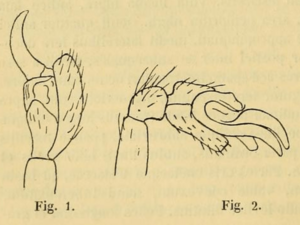Seycellesa facts for kids
Seycellesa is a special type of spider that belongs to the Theridiidae family, also known as tangle-web spiders or cobweb spiders. There's only one known kind of spider in this group, called Seycellesa braueri. This spider is quite rare and is only found in the Seychelles islands. Sadly, it's also an endangered species, meaning it's at risk of disappearing forever.
Quick facts for kids Seycellesa |
|
|---|---|
 |
|
| S. braueri | |
| Scientific classification |
|
| Kingdom: | Animalia |
| Phylum: | Arthropoda |
| Subphylum: | Chelicerata |
| Class: | Arachnida |
| Order: | Araneae |
| Infraorder: | Araneomorphae |
| Family: | Theridiidae |
| Genus: | Seycellesa Koçak & Kemal, 2008 |
| Type species | |
| Theridion braueri Simon, 1898
|
|
| Species | |
|
|
| Synonyms | |
Genus:
|
|
Contents
Where Does the Seycellesa Spider Live?
The Seycellesa braueri spider is found only on the Seychelles islands. It lives on two specific islands there: Mahé and Silhouette. These spiders prefer to live in woodland areas, usually at higher elevations, between 300 and 500 meters (about 980 to 1,640 feet) above sea level.
What Does the Seycellesa Spider Look Like?
Female Seycellesa braueri spiders are about 6.5 millimeters long, which is roughly the size of a pencil eraser. The males are much smaller, only about 2.5 millimeters long.
The top part of their body, called the carapace, is yellow-orange. It has a dark edge and a dark line down the middle. Their mouthparts and the underside of their body are a yellowish color with a hint of black. The main part of their body, the opisthosoma, is round like a ball.
Why is the Seycellesa Spider Endangered?
The Seycellesa braueri spider is listed as endangered on the IUCN Red List. This means it's in danger of going extinct. One of the biggest problems it faces is that its home, the woodland habitat, is being damaged.
This damage is often caused by invasive plants. These are plants that are not native to the Seychelles but have been brought there and are now spreading quickly. One example is the Cinnamomum verum plant, which is commonly known as cinnamon. When these invasive plants take over, they change the environment, making it harder for the native spiders to survive.
The area where these spiders live is quite small. The total area where they might be found is about 300 square kilometers (about 116 square miles). However, the actual space they occupy is even smaller, around 50 square kilometers (about 19 square miles). This small living space makes them very vulnerable to changes in their environment.
Images for kids


